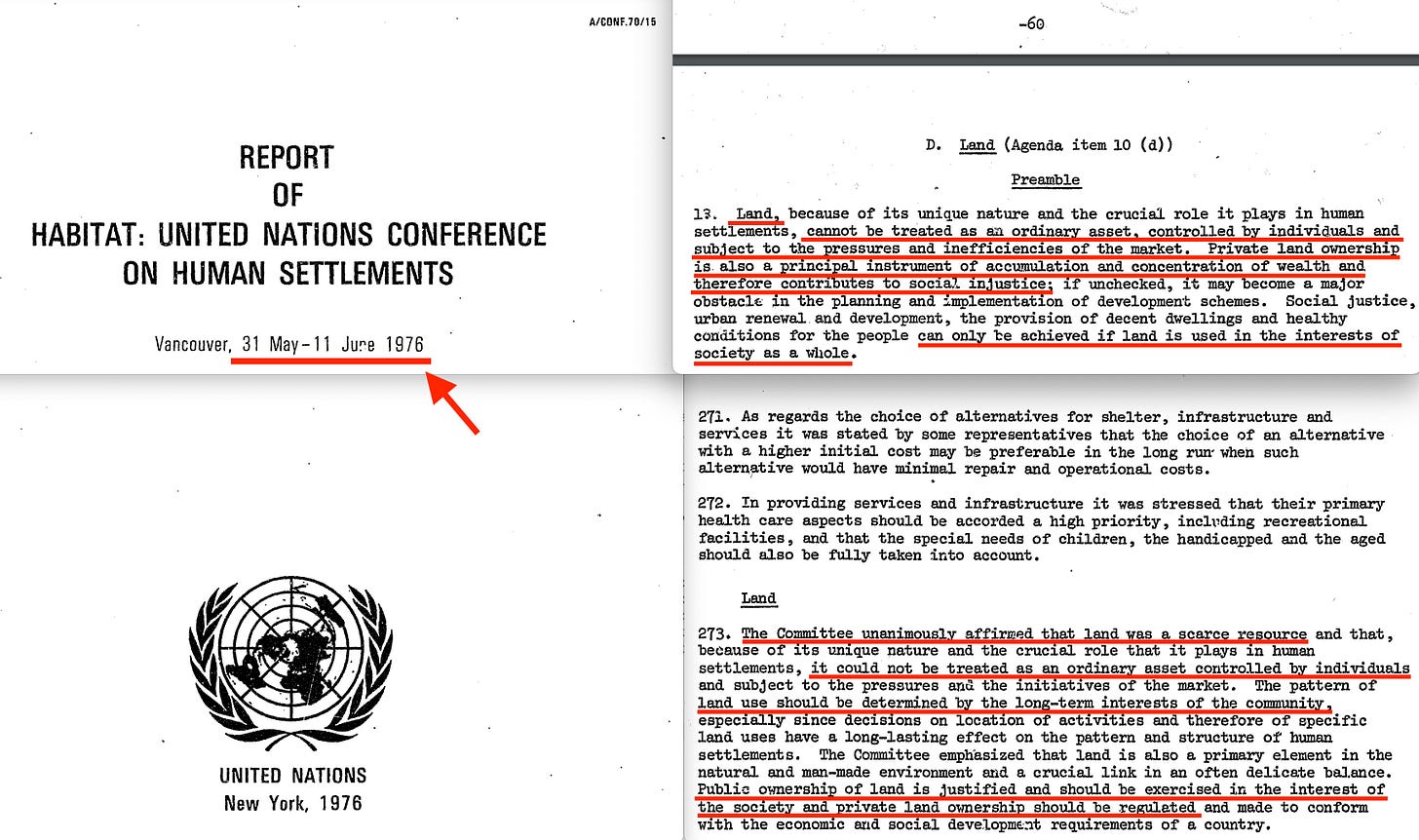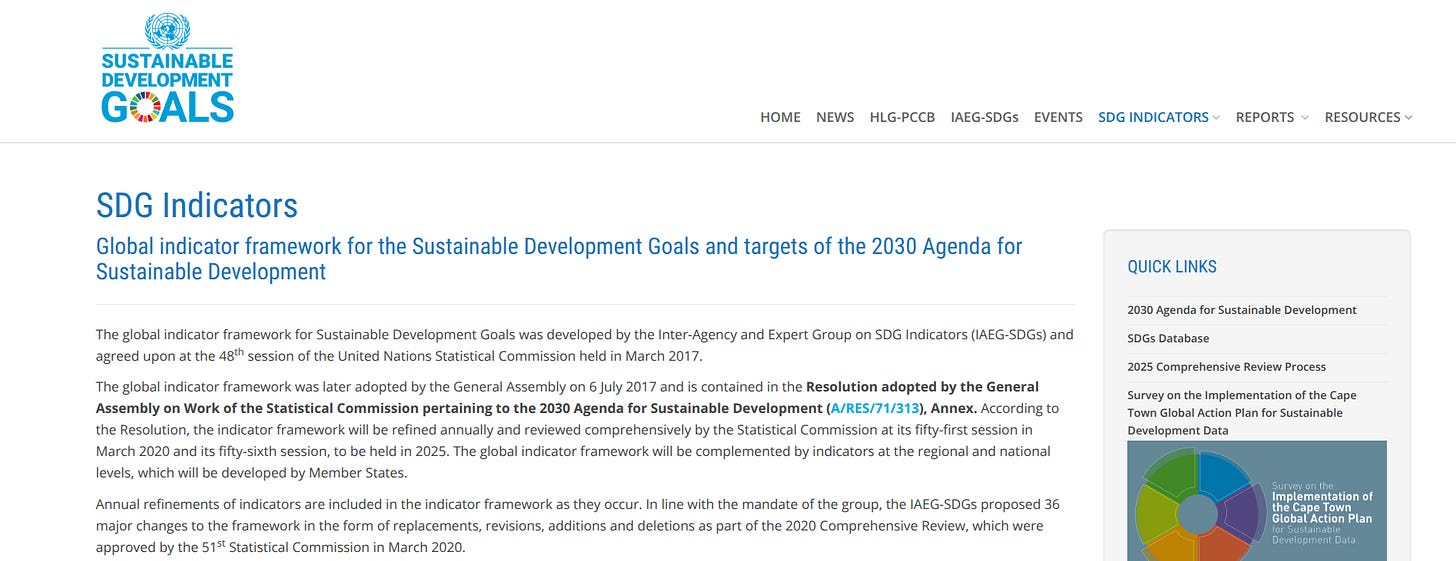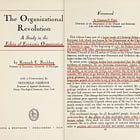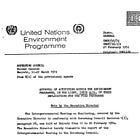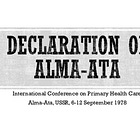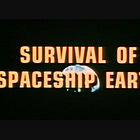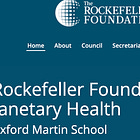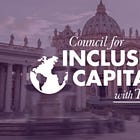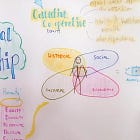The 1974 United Nations World Population Plan of Action (WPPA)1, adopted at the Bucharest Conference2, was a landmark event in the history of the development of global governance.
It established the rapidly growing global population as an international concern, directly tied to questions of equity, development, and human rights.
But rather than treating demographic trends as neutral or national in scope, the WPPA mandated coordinated global efforts to stabilise population growth through development strategies emphasising education, health, and gender equity. It introduced the precedent for global reviews, data harmonisation, and state accountability — foundational practices that remain central to international development regimes today. Most importantly, it began to codify the principle that population governance must reflect a balance between individual rights and collective global outcomes — a formula very much present in contemporary frameworks like the Sustainable Development Goals (SDGs).
Two years later, the 1976 Habitat Conference on Human Settlements3, held in Vancouver, expanded the scope of global governance from demographic to spatial concerns. It laid the groundwork for treating the built environment as a formal policy domain — one where shelter, urbanisation, and infrastructure became subjects of international coordination. The conference elevated access to adequate housing to the level of a basic human right and reframed informal settlements as policy failures to be corrected through integrated urban planning. It also embedded ecological awareness into urban policy, helping to prefigure today’s sustainability frameworks. Habitat helped institutionalise the idea that cities are not merely local matters but key strategic zones in global development — an idea that has since matured into global urban agendas and UN system multi-level governance models4.
And it was also the first United Nations event to call for the gradual phasing out of private ownership of land. A call further developed through the 1982 World Charter for Nature.
To carry the agenda forward, the United Nations established UN-Habitat in 19775 as the lead global agency for urban issues. Its creation marked a critical institutionalisation of urban development within global governance. Over time, UN-Habitat became a coordinating center for a range of issues now central to global policy: affordable housing, participatory governance, municipal finance, digital infrastructure, resilience planning, and the localisation of global goals. It has played a key role in shaping how cities engage with global norms — particularly in translating universal principles like those of the SDGs into subnational planning, implementation, and reporting structures. In doing so, UN-Habitat has not only anchored urbanisation within international development discourse but has made the city itself a primary site for enacting global policy6.
The 1992 Earth Summit in Rio de Janeiro marked a further pivotal moment in the evolution of global governance with the adoption of Agenda 217. This sweeping action plan integrated previously fragmented domains — population dynamics, human settlements, and environmental planning — into a coherent global framework under the banner of sustainable development. Agenda 21 operationalised a multidimensional vision: it built on the demographic concerns of the WPPA, the spatial logic of Habitat I and UN-Habitat, and the scientific foundations of ecological governance emerging from the environmental diplomacy of the 1970s and 1980s. Chapter 7, titled ‘Promoting Sustainable Human Settlement Development’, extended the mandate of UN-Habitat by calling for national urban strategies, decentralised implementation through Local Agenda 21s, sustainability indicators, and mechanisms for participatory governance and inter-sectoral integration. These initiatives established a governance model that blurred the boundaries between global policy and local implementation, with public-private partnerships acting in concert with General Consultative Status NGOs. More than a policy document, Agenda 21 constituted a template for an adaptive architecture of sustainability — where human settlements were no longer merely cities or towns, but dynamic subsystems within a ‘holistic’, planetary whole.
Building on this lineage, the 2015 Sustainable Development Goals8 (SDGs) represented the formal culmination of decades of convergence across development, urban planning, population management, and ecological governance. Enshrined in the 2030 Agenda for Sustainable Development, the SDGs consist of 17 goals, 169 targets, and 231 indicators9, signifying a transition from aspirational declarations to quantified ethical governance. Through their structure, the SDGs embedded normative goals into data systems, and algorithmic tools that allow for real-time assessment and steering of policy across scales. Core SDGs such as Goal 11 (Sustainable Cities and Communities)10, Goal 3 (Health and Well-Being)11, Goal 5 (Gender Equality)12, Goal 13 (Climate Action)13, and Goal 17 (Partnerships for the Goals)14 directly echo the thematic concerns of WPPA, Habitat, and Agenda 21 — refined and digitalised to reflect the infrastructural capacities of the 21st century. In essence, the SDGs complete the integration of moral imperatives into technical governance systems, transforming ethics into metrics and embedding value judgments within operational planning.
Yet, this logic — of managing society through measurable targets and feedback loops — did not begin in 2015, but its systematisation under the SDGs represents its most fully realised teleological form to date.
Use and Conservation of the Biosphere
The intellectual and institutional architecture underpinning the entire trajectory — from the World Population Plan of Action to Habitat I, UN-Habitat, Agenda 21, and ultimately the SDGs — can be traced back to a singular, foundational moment: the 1968 UNESCO Biosphere Conference15, held in Paris under the theme ‘The Use and Conservation of the Biosphere’. Though less cited in mainstream histories, this event was the first to explicitly conceive of Earth as a governable totality — a closed system composed of interdependent feedback loops uniting biospheric, human, and technological domains.
The conference marked the entry of systems ecology16 and cybernetics into international policy. Its Recommendation 1 addressed the carbon cycle, calling for coordinated scientific attention to atmospheric carbon dioxide — a prescient concern that would become central to climate change discourse. Just as significantly, Recommendations 2 and 3 proposed a unified framework for understanding health, disease, and ecological integrity, discussing zoonotic illnesses the outcome of man’s imbalance with nature — a conceptual forerunner of what we now call One Health. This framework emphasised the integration of human, animal, and environmental health as a single, dynamic system requiring cross-sectoral surveillance and intervention.
Inspired by the metaphor of Spaceship Earth — which framed the planet as a self-contained vessel requiring coordinated management — the conference also quietly introduced the Ecosystem Approach to governance. It called for planning based not only on economic or social indicators, but on ecological thresholds and systemic resilience. And though it did not yet name ‘sustainability’, the logic of the Total Human Ecosystem was already present: humans embedded within, and responsible for, a complex planetary metabolism. The Man and the Biosphere17 (MAB) programme was launched in this spirit, operationalising feedback-based planning, zonal modeling, and early data integration across national boundaries.
In essence, 1968 was the Genesis moment for the cybernetic worldview that would dominate the future landscape of global governance. It reframed governance as a matter of managing interconnected systems — ecological, economic, demographic, technological — through recursive feedback and ethical foresight. Every initiative that followed, from population plans to smart cities to the SDGs, would build on this original premise: that the Earth is scientifically legible, ethically programmable, and systemically steerable by an integrated moral-technocratic regime.
It was — in short — the launch event.
The World as a System
Every step in the reverse genealogy of sustainable development — from population control to planetary ethics — is anchored in the logic of General Systems Theory18 and its expression through cybernetic governance. This is not merely an intellectual lineage but an infrastructural reality: the entire Sustainable Development regime has been constructed atop the computational and managerial scaffolding of Planning-Programming-Budgeting Systems (PPBS; McNamara, Department of Defense, 1961-1968)19, Country Program Papers (CPP; McNamara, World Bank, 1968-1981), and Results-Based Management (RBM)20. These tools constitute the firmware of the regime, encoding ethical and ecological imperatives into development objectives, budgetary cycles, and adaptive control systems.
The operationalisation of planetary systems governance began in earnest with the 1974 World Population Plan of Action (WPPA), which inaugurated a cybernetic view of demography. Fertility, mortality, and migration were now system variables to be measured, modeled, and modified via technocratic intervention. Education, healthcare, women's empowerment, and poverty alleviation were monitored, turned into indicators, and redefined as policy levers feeding into demographic outputs. This marked the debut of population modeling within the logic of PPBS: set targets, program interventions, allocate resources, and iterate based on results. Only trouble was this marked a radical change from the past, thus placing a demand for revised education.
And the 1975 Belgrade Charter21 soon followed.
Yet this vision had deeper roots. In 1973, the SCOPE 3 report22 prefigured much of what the WPPA would formalise. It brought systems science to bear on public health, modeling ecological and epidemiological interactions, and calling for integrated surveillance systems that linked environmental conditions to health outcomes — a conceptual precursor to both One Health and pandemic governance. That same year, Marc Lalonde’s ‘A New Perspective on the Health of Canadians’23 introduced the Social Determinants of Health model, reframing health not merely as a function of medical care but as an outcome of interlinked systems: environment, behavior, biology, and policy. This shift further reinforced an understanding of public health as a system of modifiable second order variables, open to intervention — and cybernetic optimisation. When UNEP GEMS launched in 1974 it created the first global framework for environmental monitoring, which not only included public health surveillance, but further included sociological and economic factors — exactly the sort of data gathered by Lalonde’s Determinants of Health. Through GEMS, ecological indicators could now be fed into centralised feedback systems for real-time environmental assessment, ultimately facilitating policy writing at local, national, even global levels.
The scope of cybernetic governance expanded in 1976 with Habitat, the first UN Conference on Human Settlements. Here, the city was recoded as a dynamic cybernetic entity: receiving inflows (migration, energy, investment), processing them through institutional and infrastructural throughput, and generating outputs such as livability, equity, and sustainability. The same control logic that governed demography was now applied to urban morphology.
This model was institutionalised in 1977 through the founding of UN-Habitat, which extended the Country Program Papers24 (CPP; later Country Strategy Papers) into spatial governance. Urban planning was integrated into national development strategies, and cities were reframed as nodes within a global system, with systems thinkers such as Koestler25 and Boulding26 implicitly shaping this holonic conception: cities as self-regulating wholes nested within larger systems. The following year, the 1978 Declaration of Alma-Ata on Primary Health Care27 formalised a similar principle for health systems, declaring health a fundamental human right and calling for a governance model much aligned with that proposed by IFDA’s Third System. It marked the institutionalisation of global health governance — echoing the same cybernetic feedback logic also applied to urban systems, with UN-Habitat pioneering participatory planning, simulation tools, and indicator frameworks that prefigured the Results-Based Management (RBM) doctrine28.
The 1979 World Climate Conference29 added another foundational layer, implicitly introducing atmospheric carbon emissions as a planetary policy variable and explicitly calling for future-oriented planning of water, land, agriculture, and even human health based on climate models. This marked the emergence of climate as a programmable subsystem within global governance, integrating meteorology, economics, and long-range forecasting into systemic planning.
The transition to fully integrated planetary governance accelerated in 1990 with the Second World Climate Conference30, which formalised the need for satellite-based Earth observation systems. This led directly to the development of GCOS (Global Climate Observing System)31, GOOS (Global Ocean Observing System)32, and GTOS (Global Terrestrial Observing System)33. These infrastructures — tracking climate, ocean, and terrestrial feedbacks — were later consolidated under the GEOSS (Global Earth Observation System of Systems)34 initiative in 2003, establishing the sensory architecture of cybernetic Earth Systems Governance35, an architecture immensely monetiseable, as outlined by the two UNCTAD reports from 1992 and 1994; Combating Global Warming.
This logic reached full institutional articulation with Agenda 21 in 1992, at the Earth Summit36. Agenda 21 codified a systems-planning paradigm across every sector: energy, water, health, transport, biodiversity, and urban development — using the same governance model as that laid out by the Third System, incidentally a development of a guild socialist model proposed by the Fabian Society early in the century37. Chapter 7 of Agenda 21 directly extended UN-Habitat’s mandate through participatory planning, intersectoral integration, and sustainability indicators becoming formal requirements. Agenda 21 thus unified population governance (WPPA), urban governance (Habitat I), and environmental governance (UNEP, GEMS) into a coherent, cybernetic whole.
And, incidentally, in exactly the same year, the World Health Organisation published Our Planet, Our Health38, outlining this same integration from the perspective of public healthcare — while Joshua Lederberg39 published his report Emerging Infections: Microbial Threats to Health in the United States40, placing zoonotic illnesses at the crux of future human health risk.
That same year, the UNFCCC41 and Convention on Biological Diversity42 (CBD) extended the architecture further. The UNFCCC introduced a global feedback system for greenhouse gas regulation, completing the vision outlined in Recommendation 1 of the 1968 UNESCO Biosphere Conference: the need for global coordination on atmospheric carbon. The CBD, in turn, codified the ecosystem approach, reflecting principles seeded in Man and the Biosphere (MAB) and the spatial logic of the UNESCO Biosphere Reserves43 launched in 1976.
By 2000, the ecological systems vision had matured. Zev Naveh's paper on the Total Human Ecosystem44 synthesised decades of systems ecology into a comprehensive model of human-nature co-evolution, emphasising nested scales, functional feedbacks, and participatory management. Meanwhile, the One Health concept — formalised in 2004 as the Manhattan Principles45, later becoming the Berlin Principles in 2019, but presaged by SCOPE and MAB46 — closed the loop between population, health, and ecology through global, top-down integrated landscape management (the ecosystem approach)47, with the link to human health going through zoonotic disease.
Finally, in 2015, the Sustainable Development Goals (SDGs) crystallised the entire arc. With 17 goals, 169 targets, and 231 indicators, they represent the full digitisation of planetary ethics. Each SDG encodes normative principles into a cybernetic framework: real-time metrics, data dashboards, feedback mechanisms, and programmable incentives. SDG 11 (Sustainable Cities) channels UN-Habitat; SDG 3 (Health) echoes WPPA and One Health; SDG 13 (Climate) institutionalises the UNFCCC; SDG 15 (Life on Land) reflects CBD logic. Measured through surveillance indicators, and modelled via Digital Twins, the SDGs through RBM becomes global ethical programming48.
But to fully grasp this trajectory, we must return to its origin point. The 1968 UNESCO Biosphere Conference in Paris was the conceptual Big Bang of planetary governance. It marked the first time the Earth was officially framed as a closed, self-regulating system—intelligible to science and steerable through policy. Recommendation 1 anticipated the need for coordinated action on carbon emissions. Recommendations 2 and 3 laid the foundation for a systems-based integration of ecological and human health, foreshadowing the logic behind the One Health paradigm, and claims of zoonotic disease. The Man and the Biosphere (MAB) program, launched out of this conference, became the basis for territorial governance through biosphere reserves, embedding ecological feedback into spatial planning.
Just as importantly, the conference cemented the metaphors that would structure global governance for decades: Spaceship Earth, the Ecosystem Approach, and the Total Human Ecosystem — each articulating a vision of humanity as both operator and component within a planetary feedback system.
From this starting point, every major governance milestone — WPPA, Habitat I, Agenda 21, and the SDGs — can be understood not as isolated initiatives, but as iterative updates within a coherent architecture. Their logic flows directly from:
PPBS49 → planning and budgeting as recursive feedback
CPP → modular national programs nested within global strategies
RBM → outcome-driven evaluation systems for normative enforcement
Through this architecture, the nation-state is progressively reconfigured — not abolished, but transformed into a functional node within a planetary control grid to be managed. CPP is its onboarding protocol, RBM is its operating system, and the contemporary SDGs constitutes our teleological… Omega Point.
And the active implementation of this began in 1968.
The evolution of UN-Habitat through its flagship summits — Habitat II in 1996 and Habitat III in 2016 — marked two critical upgrades in the urban dimension of planetary governance. Each summit functioned as a quasi-firmware patch for the global control architecture, embedding deeper layers of normative programming and technical synchronisation within human settlements.
Habitat II50, held in Istanbul and dubbed The City Summit51, advanced the ethical framing of urban life by enshrining the right to adequate shelter and the right to participation as global governance standards. Participation itself became a system input, a way to legitimate and steer urban policy through civic engagement. Simultaneously, Habitat II initiated the use of urban indicators and called for local observatories to collect and model city-level data in real time. This marked the pivot from descriptive planning to results-based governance. The city was no longer a site — it was a node in a much greater holarchy. Housing, sanitation, energy, and mobility were now aspects of an urban control system calibrated through indicators and benchmarks. The summit operationalised the logic of PPBS and CPP at the municipal scale: intersectoral programming, quantifiable outcomes, and coordinated national inputs feeding upward into the global system.
Two decades later, Habitat III5253 in Quito deepened and digitised this model. Its output — the New Urban Agenda54 (NUA) — was designed as the implementation protocol for Sustainable Development Goal 11: ‘Make cities inclusive, safe, resilient, and sustainable’. The NUA fully synchronised urban governance with the SDG feedback matrix, turning cities into programmable platforms that generate, respond to, and are steered by indicator data, converted into moral imperatives. Habitat III emphasised smart infrastructure, real-time monitoring, and digital governance as central tools. It also linked urban planning to global finance, advancing public-private partnerships, climate finance instruments, and debt-based interventions as moral levers for transformation. Scenario modeling, complexity science, and cybernetic principles were integrated into this framework, allowing for adaptive control while maintaining alignment with global priorities.
Taken together, Habitat II and III completed the full systems-integration of the urban world. Habitat II provided the ethical upgrade, transforming shelter and participation into programmable moral norms. Habitat III delivered the technical upgrade, embedding cities within the digital, financial, and cybernetic scaffolding of planetary governance. In tandem, they translated the principles of PPBS, CPP, and RBM into the urban codebase — recasting cities as dynamic, recursive agents within the larger feedback loop of the global system.
The Dawn of Planetary Operating Systems
If Habitat III embedded cities within the digital logic of sustainable development, a future Habitat IV or SDG 2.0 could hypothetically mark the full convergence of planetary governance, real-time data ecosystems, and computational ethics55. In this envisioned summit, cities cease to be merely ‘smart’ and become conscious subsystems within a distributed planetary brain. The summit could unveil:
AI-Orchestrated Urban Planning: Urban design would be guided by predictive simulations56 integrating energy, migration, carbon flux, epidemiology, and behavioral economics57. These would not be static plans but self-updating models steered by reinforcement learning and ethical parameters encoded into the city’s operating logic58.
Planetary Health Dashboards: Building on SDG indicator systems59, and first publicly trialled during Covid-1960, this would consolidate environmental, social, and metabolic data from biosphere reserves61, hospitals, supply chains62, and satellites into a unified governance interface. Decisions — whether zoning laws or vaccine mandates — would be justified through real-time system diagnostics.
Geoengineering Governance Protocols: Habitat IV would likely initiate institutional frameworks for planetary-scale interventions63: stratospheric aerosol injection64, carbon removal markets65, and weather modulation66. A precautionary67, ethics-based feedback loop68 would govern these systems, backed by probabilistic modeling and global consent algorithms69.
Programmable Finance for Urban Bioregions: The summit would institutionalise dual-token currencies70 linked to sustainability performance71, with moral tokens (non-transferable) gating access to consumption rights, and programmable credit tied to behavioral compliance72. Cities would be scored not only on GDP but on ecological virtue, resilience indices73, and participatory integration74.
In such a regime, governance becomes ontology: ethics, finance, urban morphology, and health are no longer separate domains, but dynamically integrated subroutines in a moral-machine architecture75.
From Simulation to System of the Whole
This hypothetical convergence would mark the realisation of Cybernetic Thomism 2.0, a synthesis of teleological moral realism and recursive systems logic. Every intervention — urban, climatic, biological — would be evaluated through a nested hierarchy of ends, with AI and feedback loops serving as the real-time instantiation of natural law interpreted through rational universality. The city is no longer a polis but a moral cybernetic organism76 — a holon, along with every individual living within it.
Simultaneously, this is the natural telos of Cybernetic Empiriomonism, wherein all phenomena — urban behavior, biospheric change, financial flows — are treated as feedback-regulated expressions of a single ontological substance. The planet becomes the control surface of a unified empirical-moral field, governed by continuously updated knowledge models and cybernetic mediation.
In short, the moral imperative established through comparing SDG indicator surveillance data indicators to a reference point, will be fused into culture, education, and eventually even AI Ethics77 and the Neuroethics78 which will guide your future BCI79.
A drive, which finds its philosophical root in Alexander Bogdanov’s Proletkult.
Thus, Habitat IV or SDG 2.0 would not just mark the next step in technocratic globalism. It would formalise a metaphysical transition: from governance as policy to governance as cosmology80. A new sacred logic — measured, computed, and enforced — encoded not in scriptures but in standards, indicators, and smart contracts.
And in this logic, these twin systems — Thomism’s final causality and Bogdanov’s universal feedback — are no longer theoretical frameworks. They are the operating system of the world to come.
One, ultimately centred around the moral economy, and holistic global health security.
The Sustainable Development regime did not emerge from nothing — it was constructed iteratively, each layer building upon prior institutional and conceptual foundations. Population was first rendered a manageable variable through the 1974 World Population Plan of Action. Space was redefined as a programmable container at the 1976 Habitat I Conference. Urbanism became a site of moral design through the establishment of UN-Habitat. Planning was reconceived as systems regulation in the 1992 Agenda 21 framework. And by 2015, governance itself had been recoded as ethical programming through the teleological Sustainable Development Goals. Yet behind all of these layers stood the 1968 UNESCO Biosphere Conference, where Earth was first framed as a closed, cybernetic system, and humanity as both steward and subsystem. From that moment onward, governance ceased to be merely political — it became planetary… and ethical.
Throughout this evolving architecture, what truly animates global governance is not data or SDG indicators themselves — these are inert without interpretation — but the moral imperative that converts them into rules, standards, and interventions. This is the function of global ethics: to define what data ought to trigger action, and toward which ends. While the 1968 UNESCO Biosphere Conference introduced the systems logic necessary for a planetary feedback regime, it was later developments — such as the 1993 Declaration Toward a Global Ethic and the 2000 Earth Charter — that began to articulate the normative layer explicitly. These declarations framed shared moral obligations not merely as aspirational values, but as operational inputs into a governance system — with the 2015 Vatican encyclical, Laudato Si, being a prime showcase of this in action81.
The 2015 Sustainable Development Goals represent the culmination of this trajectory — not simply as policy objectives, but as formalised telos. Coupled with surveillance infrastructures like UNEP-GEMS, the Social Determinants of Health82, and GEOSS, the SDGs are interpreted and enforced through a dynamic ethical architecture: global ethics rendered as a programmable control layer. This process — assigning moral weight to indicators, converting values into system responses — will increasingly be automated through AI, eventually to be fully developed into cybernetic governance. In this regime, ethics is not external to data; it is the algorithmic logic that gives data purpose, legitimacy, and force. And in turn, human beings themselves are now recoded as indicator sets — moral variables in a planetary system, continuously measured, evaluated, and steered toward optimised compliance.
The human subject will become a datapoint — governed not exclusively by law, but by manufactured morality, culture, education, behavioural nudges, and… cybernetic feedback. But for this to come to pass, Digital ID is a requirement — though you can call these ‘vaccine certificates’ should you wish, with the WHO in 2023 adopting the EU version83, which Alan Gelb back in February, 2021 detailing these digital vaccination certificates are a form of functional ID84.
This holistic governance model was operationalised recently through the passage of the Pandemic Treaty which — through Covid-19 and the One Health framework — ensures that a coughing Koala could trigger future lockdowns, should the opaque, Black Box model deem it a threat to ‘global health security’.
And this leads to exactly what Rene Dubos of the Rockefeller University wanted85, when he penned recommendation 3 of the 1968 UNESCO Biosphere Conference:
Control of the world population.
Keep reading with a 7-day free trial
Subscribe to The price of freedom is eternal vigilance. to keep reading this post and get 7 days of free access to the full post archives.







